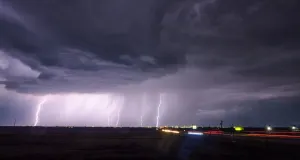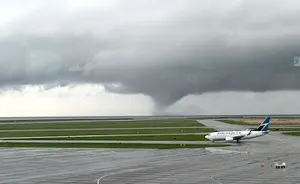
Philadelphia latest city to go dark to help migrating birds
City officials iplemented the initiative in response to a mass collision event that occurred in the city in October 2020.
Last October, as migrating birds navigated city streets on a cloudy night in Philadelphia, an estimated 1,000-1,500 of them collided with skyscrapers in a 3.5-block radius, falling to their deaths. Experts believe thousands of other birds likely died in other parts of the city as well.
Experts say an unfortunate combination of events led to the tragedy.
An abrupt temperature plunge prompted the birds to begin their winter migration. As they flew into Philadelphia in the dark, experts say they were attracted to building lights, as well as illuminated indoor atriums, leading some to think they'd found a safe place to land.
Birds rely on the stars and moon to fly at night, and city lights can be disorienting. This effect can be even more pronounced on cloudy nights because their view of the sky is obstructed, the Associated Press (AP) says.
AP calls it one of the worst mass collisions in 70 years, but bird and building collisions aren't out of the ordinary by far. A 2014 study found between 365 million and one billion birds are killed by collisions with buildings each year in the U.S. alone.
In Canada, about 25 million birds are killed annually from building collisions.
LIGHTS OUT PHILLY
The mass bird deaths reported by the Philadelphia Inquirer have spurred change. Based on the reporting, owners of some of the city's largest skyscrapers have voluntarily pledged to turn off the lights after dark in support Lights Out Philly, designed to help migrating birds.
The program starts April 1 and runs until the end of May. It will resume again in the fall, starting August 15 and running until mid-November.
Participating buildings are asked to turn their lights off between midnight and 6 a.m.
LIGHTS OUT ALL OVER
Philadelphia isn't the first city to participate in this bird-friendly trend. The National Audubon Society implemented the first program in Chicago in 1999. Since then, numerous locales have participated, including major city centres like Atlanta, Georgia, and Houston, Texas. In Canada, Toronto particpates, and the City of Ottawa recently pledged to participate in bird collision management strategies, FLAP Canada says.
REDUCING LIGHT POLLUTION AT HOME
Here are some tips to make your home safer for migrating birds, courtesy of Audubon:
Turn off bright outdoor lights. This can help a disoriented bird move on within minutes, the society says.
Turn off exterior decorative lighting, pot, and floodlights.
Reduce atrium lighting.
Use blinds to cover windows at night.
Down-shield exterior lighting. You are aiming to eliminate horizontal glare and upward-directed light.
Install automatic motion sensors.
Thumbnail image courtesy: Harry Cooke/Pexels.










